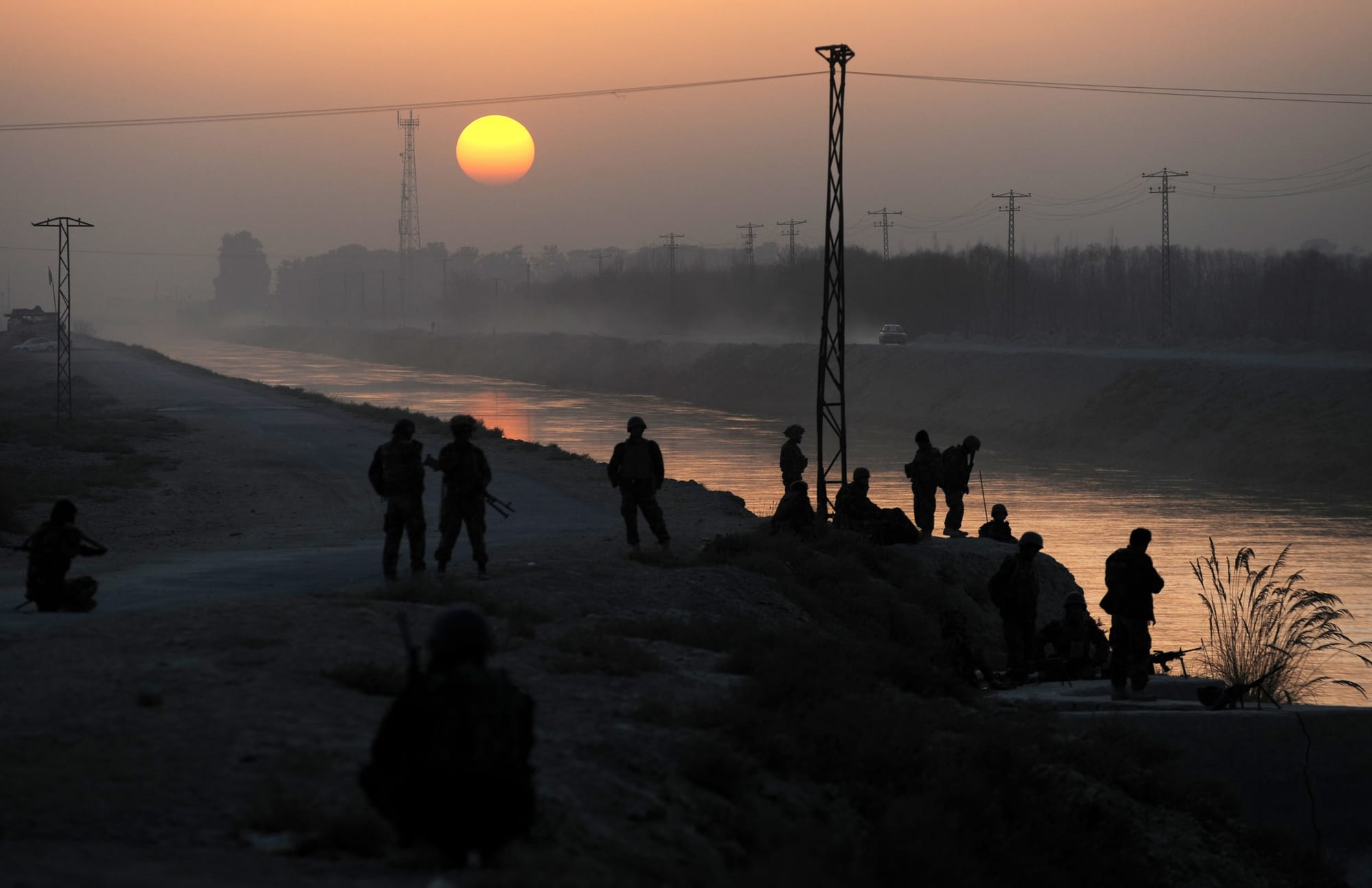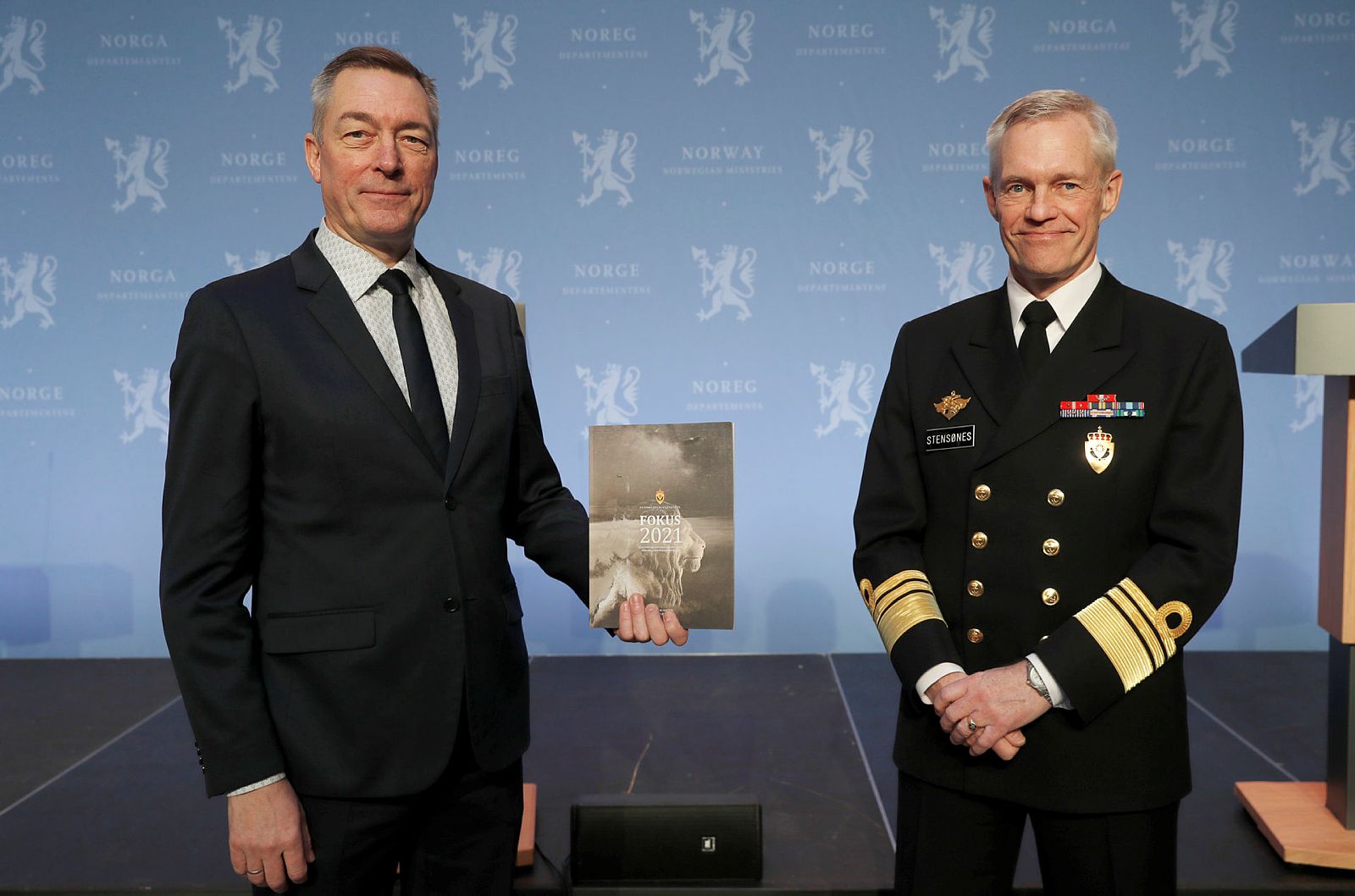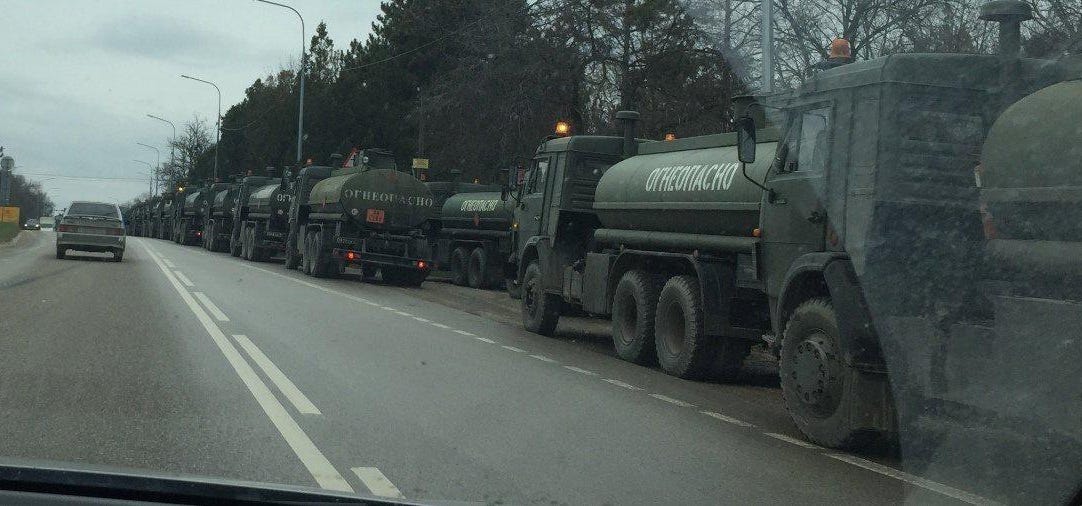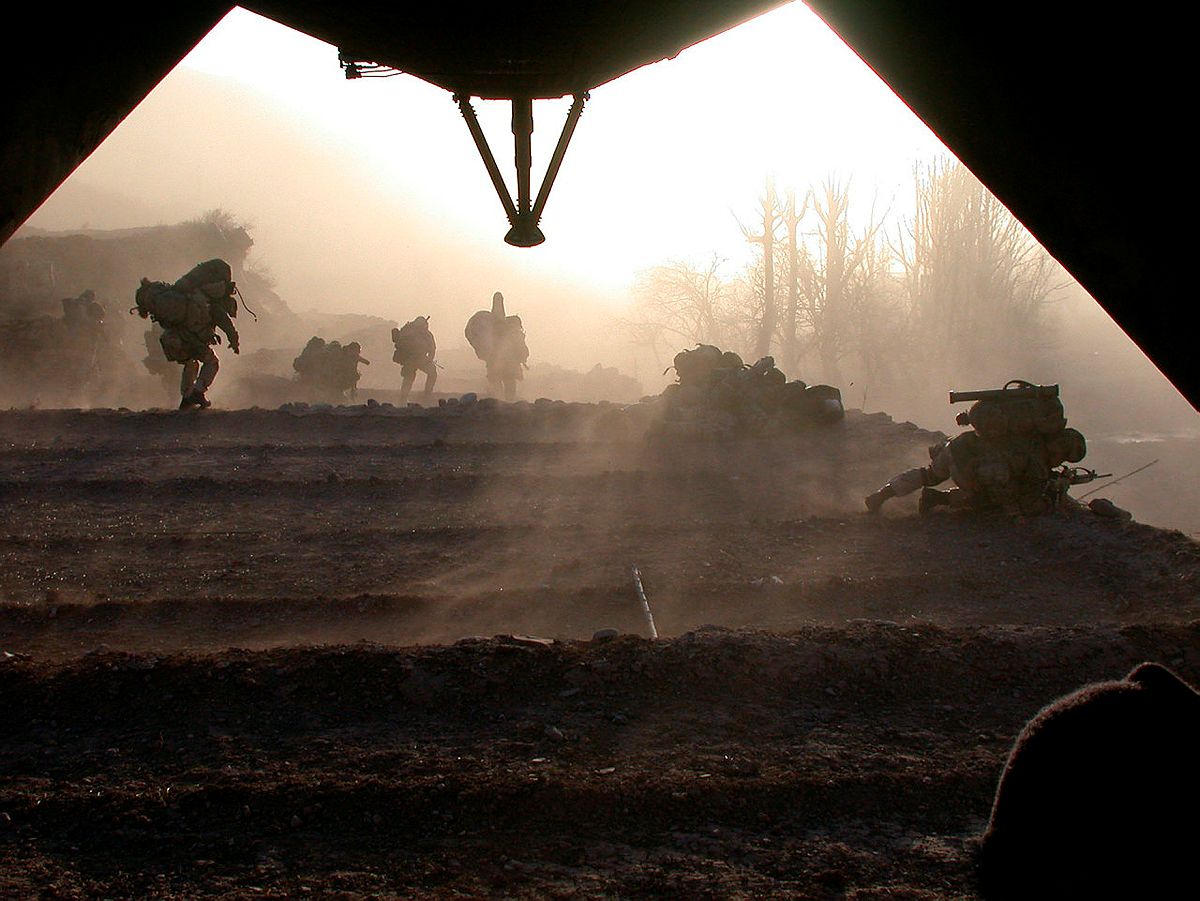Part 2: Understanding Gereshk and using the lessons learned in new intelligence analysis doctrine.
In order to rectify this lack of understanding, something new and relevant was done during 2011. The British brigade headquarter and its commander realized we lacked proper understanding, and began to do something about it. However, it was not done through the established intelligence functions, but rather as a separate study. The project was simply called “Understanding Gereshk”, and it was primarily undertaken by an unlikely couple who turned out to be a winning team. The primary writer was a British lance corporal sitting away in Lashka Gah to the south, within brigade headquarters, with access to secret computer and databases, and all available intel, and perhaps more. The second part of the duo was a young American army captain, a so called Afghan hand. He understood some Pashtu language, was a bit nerdy, and was placed with us in Gereshk, to interact with us and the Afghans. He was nice and friendly, but extremely clever. Those two between them, spent much of a year trying to compile and understand of all the intricate dynamics of this enigmatic city. I was involved in much of the work, probably serving the role both as source, interlocutor, guide, advisor and sparring. Throughout, the word understand was used in everything. We knew, that we were trying to understand. Free from the format of intelligence briefs, demands on delivery and answers, the conversations took a different turn. The conversations with Afghans also took a markedly different turn, when we weren’t trying to pry answers at every conversation, but had time just to listen and to try and understand their world.
The work in the project “understanding Gereshk” was anchored in the intelligence branch, even if it drew heavily on cultural advisors, civilian advisors, civil-military cooperation teams and so on. It remained classified, and used basic intelligence analytical techniques, such as social network analysis, layered analysis, scenario forecasting, etc. It covered motivational factors, economy, business relations, tribal affiliations, and much more. In the end, it was extremely comprehensive, even though it did not claim to explain everything. It was presented to everyone who wanted to listen, beginning with the generals. The briefing took well over an hour, much longer than intel was usually afforded. I recall the feeling of debate, where some of the commanders leaned forward and became interested. Perhaps the change of format, or the actual depth of the study worked towards it. Perhaps they just had a release from the frustration they themselves must have felt in the peculiar war. Suddenly, it was allowed to discuss what we did not understand, and try to take a broader view across the society and situation. Understanding Gereshk became a reference work in command circles in Helmand, and it provided a common platform, but also a common realization that no one understood everything. No one had to feel dumb, or to hide frustration about not fully understanding local dynamics in Gereshk. It was subsequently used in concrete examples of operations planning, political engagement and so on. Understanding Gereshk also left an impression on me, and so did the method involved, and the two main analysts who produced it.
It is only later in academic hindsight, and upon reading Dr. Kjetil Hatlebrekkes magnificent book “The problem of secret intelligence”[1] that I could place “understanding Gereshk” correctly within a proper framework of intelligence work. Hatlebrekke describes some key pitfalls of intelligence analysis as cognitive closure – the need to find an answer, and to a large extent this was what we always tried to do in Afghanistan. For all the positive and insightful ideas in Flynns “Fixing Intel”, it did not fix the analytical problem. It did however fix some issues with collection and focus, and set the path towards more effective counter-insurgency, but it did not go into the black box of the actual analysis of all the intelligence provided via the Afghan Wiki and new collection methods and foci. Hatlebrekke described the primary goal of secret intelligence (2019) as secretly generated wisdom beyond the limits of formal reasoning that makes uncertain estimates less uncertain, and consequently generates political, strategic and operational advantages over adversaries. I am quite sure that this definition from Hatlebrekke was meant at a higher level of intelligence, at a national level, and not towards the nitty gritty tactical intelligence in central Helmand years before. However, in my assessment it fits the problem and challenges. The problem of secret intelligence in Helmand was not the secret or mysteries, which potentially could be revealed by intelligence, but the complexities of the Afghan society. Complexities, following secret and mysteries, is a known term within the theory of intelligence analysis, and it was apparent here, that the intelligence product to answer a complexity, was understanding. In this context, Hatlebrekkes findings on how it is particularly with complexities that human nature, and thus that of the intelligence analysts, is most prone to provide cognitive closure, and thus fail to answer the intelligence requirement. Hatlebrekke also dwells a lot on the fact that intelligence analysis is primarily a cognitive task, and requires insight, imagination and intelligence. The example from the study “Understanding Gereshk” serves to prove and underpin Hatlebrekkes conclusions. If the answer to the normal intelligence requirements were situational briefings and intelligence reports, the answer to the complexity was to provide understanding through broader study.
Cultural Awareness was of course also prevailent throughout ISAF at this stage of the campaign. The cultural differences between Afghanistan and Afghans, and the western soldiers, were a key focus area, and much time was spent on training this. At higher levels, most generals had a cultural advisor, to advise on local Afghan customs and ways. Most notably, and of later interest, a British captain, Mike Martin visited, researching his excellent Ph.D project, which later turned in to the highly detailed and insightful book “An Intimate War”.[2] These cultural studies had a significant overlap with the “understanding Gereshk” work, but it was not intelligence. To stay within the definition of Hatlebrekke, the purpose of secret intelligence is to provide an advantage, and the “Understanding Gereshk” aimed more directly at this end, containing scenarios and recommendations.
Shortly after “Understanding Gereshk” was circulated, the ISAF effort in Afghanistan shifted towards transition, rather than as a partner in the fight against the Taleban. This however did not diminish the need to understand the environment, perhaps on the contrary, but the scale of engagement with the Afghans changed. It is a shame and a bit ironic, that such a study of Gereshk was only finished by the time we were about to disengage and leave, after years of heavy fighting and lives lost.
The lessons from Afghanistan – organizational development
While the mission in Afghanistan (and Iraq) was ongoing, military intelligence was not a branch or service within the Danish Army. But based on the experiences from these engagement, and probably with the expectation that missions like these were to be the future, a new army regiment was established in 2014, The Intelligence Regiment, and together with it the Danish Army Intelligence Center (AIC). It was a fully new regiment, with patches, belts, a mess life and everything. It consisted mainly of two batallions. The first was an Intelligence, Surveillance and Reconnaissance battalion with unmanned aerial vehicles, electronic warfare, but also small All Source Intelligence Cells, each designed to plug into a combat battalion, to increase its analytical capacity, just as had been the norm in Afghanistan, explained above. The second battalion was an analytical unit, inspired by the British then Land Intelligence Fusion Center (LIFC) scaled down to Danish ambitions. Within this was an All Source Analysis Cell (ASAC), and I was made the senior analyst, with responsible for establishing a culture of intelligence analysis, and being the senior mentor and teacher. It was a rough start in 2014, with a broad mix of personnel, of all ranks, wanting to become true analysts. It included some clever civilians, though with no experience in intelligence analysis. It included military ranks from privates, senior non-commissioned officers, and younger and mid rank officers, in order to make a career path for all ranks. All were highly motivated, but the whole unit suffered from a lack of proper doctrine. The basic Danish intelligence doctrine at the time was still the little red booklet mentioned in the beginning, and it only covered up to and including brigade, but also only covered military field intelligence. This was an army level unit, and was supposed to be all source, and to support units deployed. New doctrine, new methods and new products had to be produced. Many of these basic procedures I developed in unison with an old major, the actual ASAC commander. His advantage was that he was very well read in military history, and had experience from the divisional level, and that he had a bit of a curious mind. Together we sat out to set the stage for army level tactical intelligence support, with no doctrine to stand on. I realized quickly, recalling Flynns “Fixing Intel”, that we could not deliver timely analyzed tactical events to units deployed in Afghanistan and other faraway places. We had to provide something else in the intelligence analysis. Actual intelligence requirements were not forthcoming, and their was no Army Headquarters G2/Intelligence Section to guide us. By sheer coincidence, in the autumn of 2014 Daesh – the Islamic State – began rising and the west began to intervene. Denmark were to send contingents to Irag on short notice, and they needed intelligence on what to expect. All analysis was pooled to provide the most we could, and it would do well. We could work on civilian map ressources, civilians with academic skills and practical experience with Islamic extremism, technical expertise on armored vehicles and tactics, and so on. We began briefing units in longer situational and preparatory briefings, and we invited battalion intelligence sections for read-in days, and it was very well received. After some iterations, one battalion intelligence officer came to me and said; “Niels, for the first time that the Army is sending me to some strange country, I now have some idea of what I am going into”. To me, this was the best proof that we made a difference, and that we did nearly the right thing. Daily work was much about following events in the various areas of operation, serving as a sort of reach back and distanced analytical overwatch. We tried to deduce patterns out of indirect fire and the likes. But I also strived for the ASAC to deliver more than that, and that was what I took into the standard operations procedures for the analysts; the aim of trying to provide further understanding to the deployed units, about the environment they were in.
Understanding Mali, DAESH and Russia
The deployments in 2014-2016 were primarily the fight against ISIS in Iraq, the United Nations deployment in Mali, and rotations to the Baltic countries to deter a more aggressive Russia, after the beginning of the war with Ukraine in 2014 onwards. Those three became the primary focus areas of our intelligence analysis and production. The effort was in line with the thoughts of Flynn in “Fixing Intel”, to focus on what could be value added from a distance, and not to copy the tactical work of lower units closer to the fight. In order to focus the analysis and intelligence products this way, it was necessary to develop the necessary structure of the analysis, the relevant templates of products, and the language to control it during daily work. In sum, this could be described as the lacking doctrine to conduct intelligence support at the army level. The primary tool used to induct the relevant analysis, what was I described as the intelligence pyramid (Ill. 1). With this I divided intelligence into three main categories, namely information, intelligence and understanding, building upon each other. Information is necessary to produce intelligence, and intelligence is the basis for understanding. In this regard, it followed the recipe for understanding Gereshk.
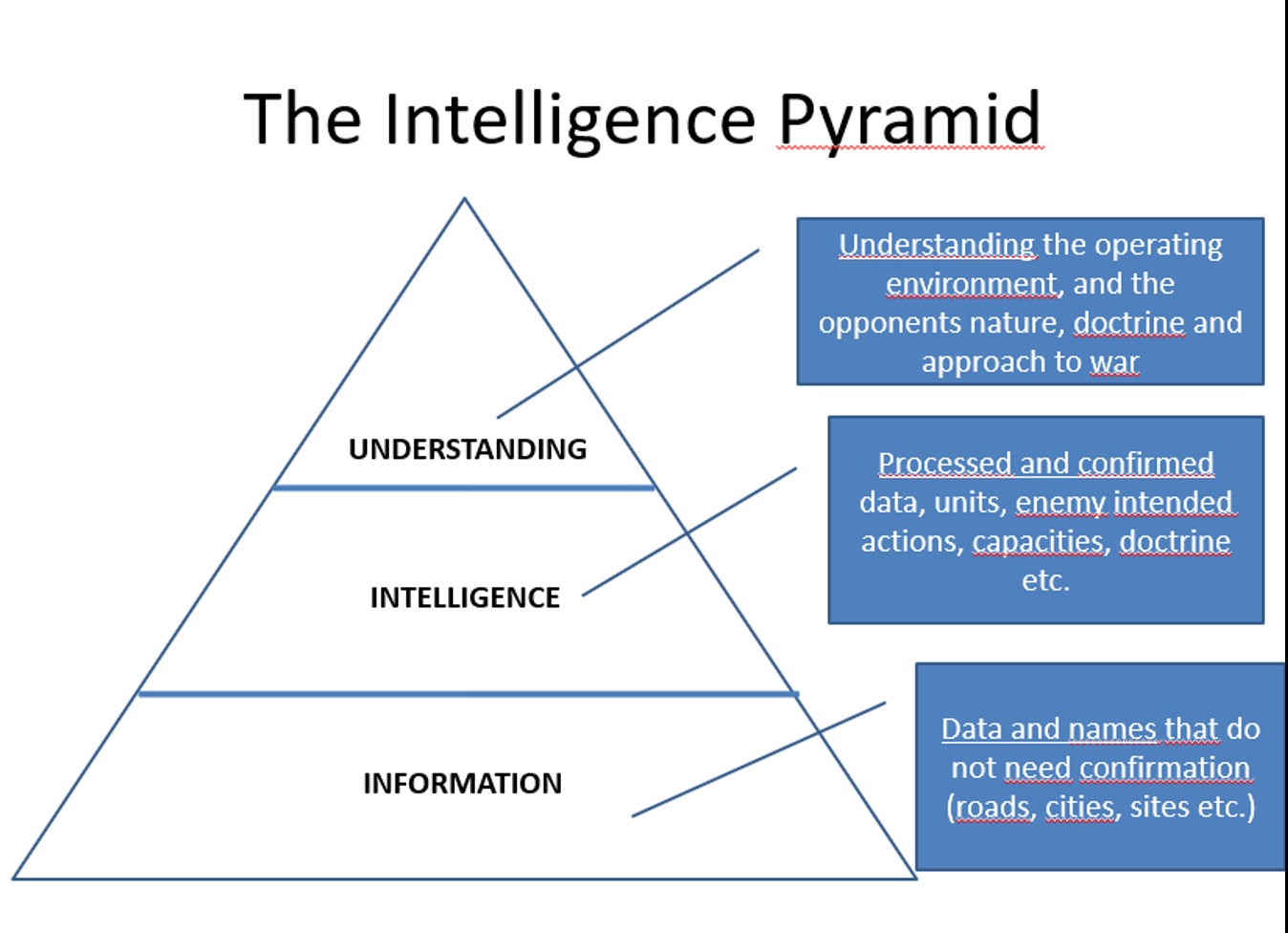
To further explain understanding as a term hitherto new and not defined in doctrine, to analysts to steer and control analysis and products, I defined the mission of the unit as; “In-depth analysis of wider scope of conflict, motivation, dynamics, human factors, trends and developments, in order to enhance (provide/enable) understanding for deployed units” (original underlining). I went on to further explain understanding in the instructions for analysts, as; “Comprehensive in-depth understanding of conflicts, areas and societies, where military operations take place, is a crucial addition and force multiplier function to the basic intelligence work (in a mission)” and “An understanding based upon in-depth expert analysis of; dynamics, networks, human, religious, political, economical and other factors, is key to conducting succesful military operations in non-linear military conflicts”. In order to convey the results of these analysis, we invented the intelligence product Thematic Analysis, to distinguish it from the standard intelligence reports, and the supplementary intelligence reports. The thematic analysis would often include extended use of background information, data, graphs and trend analysis, or perhaps scenarios. The products would routinely be more than five pages, perhaps up to ten, but still a fairly easily comprehensible read.
Conducting the analysis, the normal intelligence tradecraft applied, as to sources, collection, models of analysis, assessments, etc. Most of the analysis was conducted in mixed teams of four to six analysist, with different backgrounds and expertise, in order to enhance fusion and scope. The primary difference in conducting this analysis was regarding the intelligence requirements and the subjects. The formal intelligence requirement management process, from mission to home country was very inexperienced. There was a tendency to expect that a unit deployed in a multinational mission, was provided the necessary intelligence from the mission setup and headquarters, with no need for support from national units, in many ways mirroring the early experiences in Afghanistan before the ramp up of intelligence sections and the impact of “Fixing Intel”, and a good example of not choosing to fight how one trained (planned). Thus the choosing of subjects for analysis towards the understanding level of intelligence had to be internal, based upon our reading of intelligence, and in dialogue with the deployed unit. Lower level units deployed would not always be in a position to ask for specific longer term intelligence requirements, but had to keep focused on their own intelligence work at the tactical level, so the identification of relevant subjects to provide understanding for, would stem from this dialogue. This could also be viewed as a modification of the requirement part of the intelligence cycle, as described by Clark[3], although with the dialogue aimed downwards, rather than to a political customer at strategic level. Visits by analysts to mission areas for a week or more, often allowed analysts to assess the situation on their own, and be better prepared to identify areas for thematic analysis.
The resulting products largely succeeded in providing value added to units deployed, and giving them an advantage in their mission, through analysis they could not themselves conduct. Examples of this was the very early (2014) analysis of Shia militias in Iraq, near Danish units, before they later came to the fore. We could provide an analysis of these militias and networks, and ties to political developments, which later became relevant to the unit, thus providing them a better understanding of their environment, and a stepping stone to provide better intelligence on these, once the need arose. Another example was the analysis of political developments and national elections, as well as developments in Iran, which could have a spillover effect at the tactical level. Much of this did not provide actionable intelligence as such, but provided a tactical unit with a better understanding of their operating environment.
Conducting thematic analysis on Russia was more difficult. There was no actual engagement, but much preparation, and a violent conflict in eastern Ukraine to build upon. Much analysis on Russia focused on what is termed actual intelligence, as it is described in the intelligence pyramid, and mainly focused on the Russian army, materiel, units and orders of battle, and new tactical developments and insights from eastern Ukraine. To provide further understanding of the Russian army to tactical level units, during peacetime, was less straightforward. Inspirational were much larger RUSI products, upwards 100 pages, titled things like “How Russia fights”. These no doubt provided understanding, because they were general and preparatory in nature. Building upon those, we tried to condense intelligence and insight into more succinct thematic analysis focused on the tactical level. Examples of this could be a more thorough analysis on Russian attacks and higher level planning, aimed at providing the reader an advantage in eventual combat, providing a better understanding of the enemy. Much in focus in this period was the various levels of units, such as the battalion tactical group, the brigade and the divisional level, and we tried to analyse this within the aim of understanding the enemy better. In the intelligence analysis and production process, the distinction between information, intelligence and understanding, served as a useful tool at army level, to steer the focus and analysis.
Mali, where Danish units were deployed as part of the United National Force MINUSMA, were more akin to the counter-insurgency effort in Afghanistan, and the lessons from Afghanistan, “Fixing Intel”, and thus the relationship between intelligence and understanding easier to explain. Thematic analysis provided some of the conflict understanding more akin to the “Understanding Gereshk” product, even if we were unable to visit the mission as much as was possible in Afghanistan.
Understanding and the intelligence pyramid are useful analytical terms
In the more recent work (2019) of Kjetil Hatlebrekke, “The Problem of Secret Intelligence”,[4] he argues that intelligence operators must comprehend the wholeness and the larger context, and only in that way understand the complete dynamics and wholeness of threats. The risk is, according to Hatlebrekke, that treating intelligence fragmented, drives the cognitive process and produces fragmented answers. This may be useful for information, and to some extent for intelligence at the tactical level, on a very short intelligence cycle of 24 hours or less. But it appears that the fragmented result is what Flynn described in 2010, and what “understanding Gereshk” aimed to remedy. Hatlebrekke also argues that intelligence analysts must possess imagination and creativity, something very alien to the extremely structured and rational tactical level intelligence processes. It is also natural, that imagination and creativity is not what intelligence operators in a battalion HQ is chosen for, and that their tasks do not always reflect this. In retrospect, I feel that the term understanding, and its type of products and analysis behind it, corresponds well to the problems set forth by Hatlebrekke, and attempts to answer the need for wholeness.
As the senior analyst, responsible for analysis and production, the use of the intelligence pyramid and its division of information, intelligence and understanding was a helpful intelligence leadership tool. It provided a language and a framework for analysts to refer to. The intelligence trade, at any level, has often been characterized as a profession without sufficient theory and a common language, from Sherman Kent up to and including Kjetil Hatlebrekke. This lack of general theory and substantial common language was likely behind the approach of Michael Flynn in his “Fixing Intel”, in his realization of what was lacking once he stood in it. It was also very evident for me in Helmand, and the learning outcome of “Understanding Gereshk” serves to illustrate this. I found it useful to build upon these experiences to develop the intelligence pyramid, and the division between information, intelligence and understanding, and to use it actively in analysis and production, as an intelligence leadership tool. This tool worked regardless of the task being ISIS in Iraq, UN in MALI, or preparing to fight the Russians. I felt that it gave analysts a clearer idea of the purpose of their products, and that the understanding purpose of intelligence was more evident to analysts. Actively used as a foundation, I believe it would help to prevent the intelligence shortfall that was experienced in Afghanistan before 2010, and to expand the role of even tactical intelligence units. By providing understanding as an intelligence product to units, it would serve to increase the advantage over the adversary, the ultimate goal of any intelligence function.
This article builds solely on my personal experiences and thoughts. I am in debt in particular to the bright British lance corporal and the American captain behind “Understanding Gereshk” and the old Danish major who allowed me to implement the intelligence pyramid and understanding as a term, while I was senior analyst. The article was also intended to share actual battlefield developments and analysis, hands on experience, as a supplement to the many excellent theoretical articles and studies. I hope you found it insightful, even if just a bit.
FOOTER
[1] Hatlebrekke, Kjetil; ”the Problem of Secret Intelligence”, Edinburgh University Press, 2019.
[2] Martin, Mike, ”an Intimate War – An Oral History of the Helmand Conflict”, Hurst publishers, 2017
[3] Clark, Robert; ”Intelligence Analysis, a Target Centric Approach”, 4th edition, 2012
[4] Hatlebrekke, Kjetil; ”the Problem of Secret Intelligence”, Edinburgh University Press, 2019
Photo: Defence Imagery UK/Wikimedia commons


